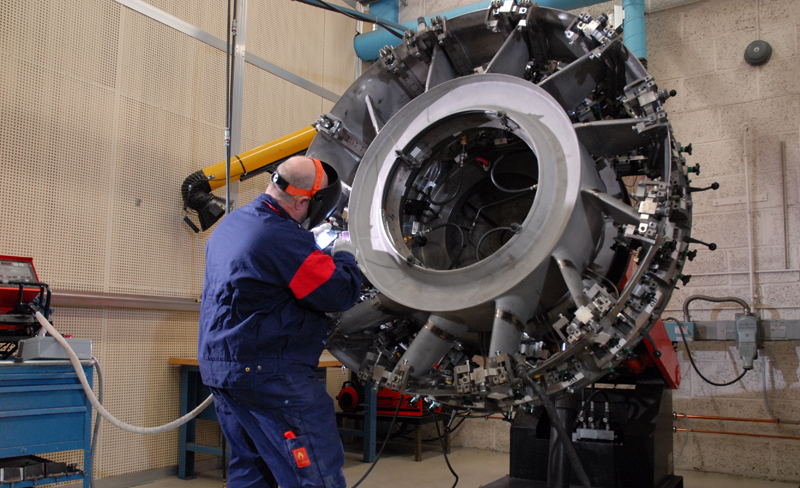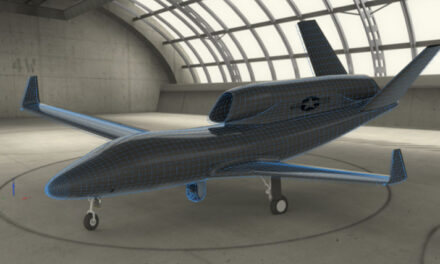GKN Aerospace Engines, a business line of GKN Aerospace, needed a better tool to plan and optimize their production process and production equipment investment, a tool that would aid in strategic planning, and handle real life complexity to accurately predict lead times and consider variation. The production complexity and the daily base decision making and created an opportunity for a simulation-based approach, to support a continuous improvement. This led GKN Aerospace to believe that discrete event simulation would perfectly support the company’s different initiatives.
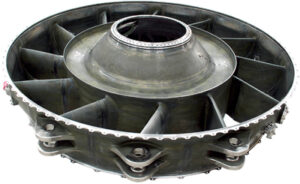 Recognizing a clear need to make their current processes more efficient, while also considering expected future production volume increases, GKN Aerospace decided to conduct a pilot program using Plant Simulation in the Tecnomatix portfolio, which in turn is a part of the Xcelerator product family from Siemens Digital Industries Software.
Recognizing a clear need to make their current processes more efficient, while also considering expected future production volume increases, GKN Aerospace decided to conduct a pilot program using Plant Simulation in the Tecnomatix portfolio, which in turn is a part of the Xcelerator product family from Siemens Digital Industries Software.
– We started to use Plant Simulation as we needed a better strategic planning tool to analyze and plan production capacity, says Alexander Hall, MOM-MES Architect, GKN Aerospace Engines Business Line, TI-IS. Given the combination of increased forecasted production volumes and the complexity of our production process, we have realized that the static capacity analysis tools we were using were not accurate enough.
Pilot project takes flight
The Plant Simulation pilot project was conducted at GKN Aerospace’s plant in Kongsberg, Norway. This plant was selected for the pilot, as production volumes of their TEC/TRF product family were expected to grow significantly, creating the need to conduct a production analysis and adjust the product system to the new expected volume.
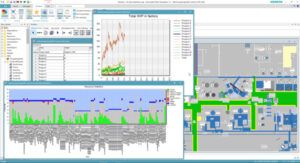 GKN Aerospace created a simulation model with Plant Simulation, simulated real-life historical production scenarios to validate the model accuracy, and used the model to test future production volume increase scenarios and options. In addition, the capability of Plant Simulation to visualize the production process in a dynamic 3D environment was powerful as it helped GKN Aerospace’s employees to better understand the layout, production process and material flow.
GKN Aerospace created a simulation model with Plant Simulation, simulated real-life historical production scenarios to validate the model accuracy, and used the model to test future production volume increase scenarios and options. In addition, the capability of Plant Simulation to visualize the production process in a dynamic 3D environment was powerful as it helped GKN Aerospace’s employees to better understand the layout, production process and material flow.
The Plant Simulation pilot project had three main targets: evaluate the applicability of Plant Simulation for GKN Aerospace, produce a simulation template that will ease the use of the simulation tool in other production sites and analyze the expected volume increase. All three targets were met successfully with Plant Simulation.
Another, somewhat unplanned benefit was that it gave GKN Aerospace a better understanding of how production related data is handled within the company, allowing them to identify several potential areas of important improvements in systems integration and data flows. Finally, all the insights obtained with Plant Simulation were gained through the creation of a realistic production digital twin model without interfering with the actual production.
Martin Asp, MOM-MES Architect, GKN Aerospace Engines Business Line, TI-IS says that GKN Aerospace’s production system is very complex and includes variability in both volume and product mix. – It’s a system within a system, with a lot of interdependencies, which makes it challenging to analyze without a suitable tool, he says. As such, we have found Plant Simulation is a tool that can handle this complexity and highlight beneficial insights.
Plant Simulation showed GKN Aerospace’s production team that facility equipment breakdown and maintenance was impacting production of their leading turbine rear frame product by only four percent, which contradicted their original projections. On the other hand, Plant Simulation revealed that manual production impacts 72 percent of the lead time, clearly showing where optimization can be most impactful.
– We realized we needed to change the static production analysis we were doing to a dynamic one, so we started to use Plant Simulation, says Mikael Carlsson, MOM-MES Manager, GKN Aerospace Engines Business Line, TI-IS. We decided to include non-conformance processes in our simulation model. Predicting lead times for rework orders is a challenge for our business. Using different scenarios in Plant Simulation we can see the impact on lead time of different types of rework. We were also able to identify a bottleneck caused by rework in combination with main production flow. We resolved this by adding a new workstation.
– We found the capacity and utilization results obtained with Plant Simulation were 30 percent more accurate than our previous methods, says Ragnhild Hansen, technology/project engineer, GKN Aerospace Kongsberg site.
Positive early returns
The Plant Simulation pilot project provided GKN Aerospace with a software tool that can handle its strategic target to reduce production lead 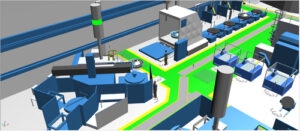 time with the expectation it will ultimately result in a competitive advantage. GKN Aerospace also used Plant Simulation to calculate production capacity and visualize the material flow. The simulation helped easily identify bottlenecks. Plant Simulation also helped GKN Aerospace plan production shifts and answer operational questions.
time with the expectation it will ultimately result in a competitive advantage. GKN Aerospace also used Plant Simulation to calculate production capacity and visualize the material flow. The simulation helped easily identify bottlenecks. Plant Simulation also helped GKN Aerospace plan production shifts and answer operational questions.
– Following the comprehensive Plant Simulation pilot, we were convinced that Plant Simulation can be used to create a simulation model of our aerospace engines production processes, says Karl-David Pettersson, SVP Engineering & Technology, GKN Aerospace Business Line. It helps us optimize production processes, better utilize our production assets, validate the material flow, reduce WIP and determine when we have to purchase new production equipment to increase production capacity.
Jonas Steen, Director of Technology Insertion Information Systems, GKN Aerospace Engines Business Line, concludes, – GKN Aerospace Engines Business Line produces complex products with exceptionally high-quality requirements in a low volume, using very expensive equipment, which is sometimes used for various products. The combination of all this creates a very complex production scenario, such that only an advanced simulation tool like Plant Simulation can handle this complexity.

